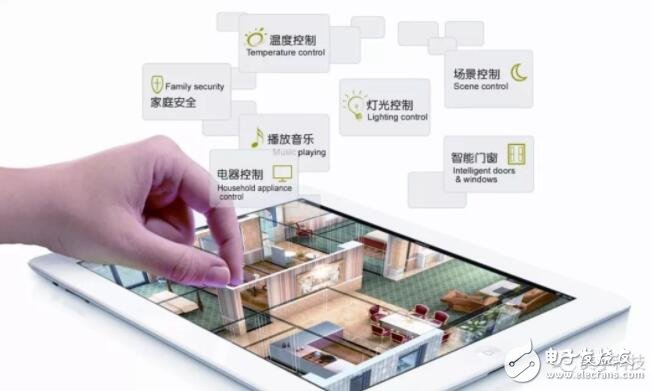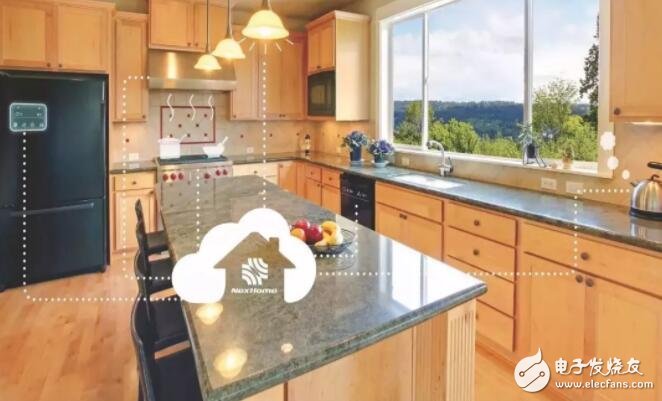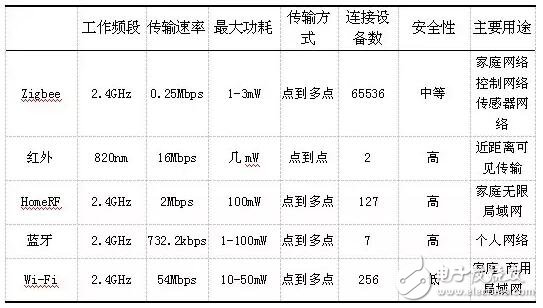Smart homes are already a trend. The core of the smart home system lies in the communication technology it relies on. The commonly recognized communication technology is mainly in the mobile field, from the initial GSM, to 2G and then to 3G, the current application of the communication technology is 4G. So what are the communication technologies of the smart home system? The editor focused on the communication technology category of intelligent control systems at the beginning of 2016. As the demand for smart home systems and market awareness gradually heat up, smart integration vendors emerge in endlessly, and the price is also different. How to choose a smart home system?

In the smart home integrated control system, there are mainly two types: wired and wireless, each with its own advantages, depending on the customer's situation.
The advantage of wired is that the signal transmission is stable and the anti-interference is strong. Because the wiring method is adopted, the signal will go wherever the line goes. It is suitable for intelligent control of buildings and communities, villas and large apartments. The choice of the type of wired communication technology also depends on the number of customers' equipment control and the customer's spatial distribution. Good wired technology has tens of thousands of control nodes and a transmission distance of up to several kilometers. In the intelligent integrated design In a comprehensive and complete situation, the advantages of wired stability are irreplaceable. However, the wired system technology is complex, requires high professional requirements for engineering service providers, and requires integrated wiring. There is basically no possibility of installation in a renovated house, and the price/performance ratio is not as good as that of wireless intelligent systems. All in all, if customers want to fully install a smart home system regardless of cost, wired is undoubtedly the best choice.
However, in the field of ordinary households, where the house size is small and there are not many intelligent integrated control devices, wireless is the best choice. Compared with wired programming technology, wireless technology has simpler requirements such as integrated wiring, and there are more choices for brands and engineering service providers. Therefore, the promotion and popularization of wireless are faster.
Smart home wired technology and wireless technology are both typical manufacturers. Wired technology vendors are represented by StarNet Ruijie, Hedong, NICO, Crestron, AMX, Savant and other companies with considerable software development capabilities. Wireless technology Manufacturer representatives include: Nanjing IOT, Aijia Venus, Ziguang IOT, Ou Ruibo, Xiaomi, control4, etc. According to the comparison of wired and wireless communication technology, it is easy to compare the advantages and disadvantages of wired technology and wireless technology.
1. Smart home wired (bus) technology
|| LonWorks bus
The LonWorks fieldbus technology is an intelligent control network technology developed by Echelon Corporation of the United States in December 1990, with a total of 700 people participating in the research and development. The founder of Echelon is MikeMarkkula, who is also one of the main founders of Apple Computer. LonWorks is a fieldbus technology with strong strength. It uses all seven-layer communication protocols of the ISO/OSI model, which can make short control information very reliable transmission in various media, and the direct communication distance can reach 2700m. The number of nodes is up to 32385! The core of LonWorks technology is the Neuron chip. A small chip is equipped with 3 microprocessors to manage the network, media access, and application respectively. Adopting LonWorks technology network can easily realize peer-to-peer communication between different systems and different products. It is widely used to construct distributed control networks and guarantees the stability of the system to the maximum extent.
|| KNX bus
KNX is the abbreviation of Konnex. In May 1999, the three major European bus protocols EIB, BatiBus and EHSA merged to form the Konnex Association, and the KNX protocol was proposed. The agreement is based on EIB, takes into account the physical layer specifications of BaTIBus and EHSA, and absorbs the advantages of BaTIBus and EHSA configuration modes, and provides a complete solution for home and building automation. It occupies a leading position in the European home automation and building automation markets. In the KNX system, the bus connection method is that the regional bus is connected to the main line, and the main line is connected to the bus. The system allows 15 areas, that is, 15 regional buses, and each regional bus or main line allows up to 15 buses to be connected , And each bus allows up to 64 devices to be connected, which mainly depends on the power supply and device power consumption. The entire system can also realize corresponding system functions by pre-setting control parameters, such as group commands, logical sequences, and control adjustment tasks.
|| RS-485 bus
RS485 is a standard that defines the electrical characteristics of drivers and receivers in a balanced digital multipoint system. The standard is defined by the Telecommunications Industry Association and the Electronics Industry Alliance. RS485 has two-wire and four-wire connections. The four-wire system can only achieve point-to-point communication. It is rarely used now. Nowadays, the two-wire connection method is mostly used. This wiring method is a bus topology. However, the number of bus nodes is limited. When using standard 485 transceivers, the maximum number of nodes in a single channel is 32, the transmission distance is relatively short (about 1.2km), and the transmission rate is low (300 ~ 9.6kbps); the transmission reliability is poor. For a single node, the circuit cost is low, the design is easy, the implementation is convenient, and the maintenance cost is low. Generally, RS-485 in the market adopts half-duplex working mode, and only one point can be in the sending state at any time. Therefore, the sending circuit must be controlled by the enable signal. RS-485 is very convenient when used for multi-point interconnection, and can save a lot of signal lines.
|| CEBus bus
CEBus (ConsumerElectronicsBus) is a communication and product and operability standard formulated by the Electronic Industries Association (EIA) for consumer electronic products. It is the five types of media (power line, wireless frequency, infrared) used for communication between household appliances. , Twisted pair and coaxial cable) signal transmission standards. The signal transmission rate and system capacity are 10kbps and 4G respectively.
|| APBus bus
APBus bus is currently the only bus technology with China's independent intellectual property rights. It is a family-oriented, fully distributed intelligent control network technology, which is similar to LonWorks technology. The product has two-way communication capability, interoperability and interchangeability, and its control components can be programmed. The signal transmission rate and system capacity are the same as CEBus, which are 10kbps and 4G respectively.
|| CAN bus
The CAN bus (ControllerAreaNetwork) was a multi-host local network that Germany BOSCH launched in 1983 for current automotive applications. It belongs to the category of FieldBus. It is a peer-to-peer supporting distributed control and real-time control. Fieldbus network. Its network characteristics use differential voltage transmission; the number of bus nodes is limited. When using standard CAN transceivers, the maximum number of nodes in a single channel is 110. Its transmission rate ranges from 5kbps to 1Mbps. The transmission medium can be twisted pair and optical fiber. Etc., the transmission distance between any two nodes can reach 10km. Among the several existing fieldbus methods, it has a higher cost-performance ratio.

|| Ethernet
Based on the IEEE802.3 specification, the network structure adopts CSMA/CD technology. There is no limit to the number of nodes, and the transmission reliability is high. For a single node, the cost is high, and the software and hardware design and maintenance costs are high. The most widely used information network is 100M Ethernet.
|| LCN bus
The LCN module is equipped with two actuators as standard, and other extended actuators and sensors are connected through three multi-purpose interfaces T, I, and P. LCN has the advantages of simple wiring and simple parameter setting. It provides a small but full-featured bus module and a multi-level message feedback system, so it is considered by many people in Europe to be the most advanced bus technology at present.
|| CC-Link bus
"Control and Communication Bus CC-Link Specification" (Control&CommunicaTIonLink) obtained the Chinese national standard in September 2005 and entered the Chinese market. This is launched by Japan's Mitsubishi Electric, and there is another bus technology option in the Chinese market. It is worth noting that this bus technology has been successfully applied to intelligent construction projects in China.
|| TP-Bus bus
TP-Bus is a power/signal hybrid transmission technology, as well as a home automation network bus technology. The bus technology is mainly used for networked control, such as smart home networks. The bus technology uses 24V DC power supply, the signal transmission rate is 10kbps, and the twisted pair is used as the transmission medium, which is easy to implement. The network structure of the bus enables the network to be used for data transmission as well as for power supply.
2. Smart home wireless technology
There are basically the following types of wireless technologies currently used in the market: Zigbee technology, infrared technology (IrDA), HomeRF, Bluetooth technology (Bluetooth) and Wif technology.
Zigbee technology
Zigbee technology is a short-distance, low-power, low-rate, and low-cost two-way wireless communication technology. It is mainly used for data transmission between various electronic devices with short distances, low power consumption and low transmission rates. There are periodic data, intermittent data and low response time data transmission applications. As a wireless communication technology, ZigBee has the characteristics of low power consumption, low cost, short delay, large network capacity, reliability and safety. The most representative one is conTIol4.
Infrared Technology (IrDA)
The infrared interface is the configuration standard of a new generation of mobile phones. It supports data exchange between mobile phones and computers and other digital devices. Infrared communication has the characteristics of low cost, convenient connection, simple and easy to use and compact structure, so it has been widely used in small mobile devices.
The main application of infrared technology: device interconnection, information gateway. Infrared transmission is a point-to-point transmission method. It is wireless. It must not be too far away. It must be aligned with the direction, and there must be no obstacles in the middle, that is, it cannot pass through walls. It is almost impossible to control the progress of information transmission.
HomeRF
The purpose of the HomeRF wireless standard is to enable wireless communication between computers and other electronic devices within the home. It is a synthesis and improvement of the existing wireless communication standards: when performing data communication, the TCP/IP transmission protocol in the IEEE802.11 specification is adopted; when performing voice communication, the digital enhanced cordless communication standard is adopted.
However, this standard is not compatible with 802.11b and occupies the same 2.4GHz frequency band as 802.11b and Bluetooth, so there will be a lot of limitations in the application range, and it is mostly used in home networks.
Bluetooth technology
Bluetooth: It is a wireless technology standard that can realize short-distance data exchange between fixed devices, mobile devices and building personal area networks (using UHF radio waves in the ISM band of 2.4-2.485 GHz).
Bluetooth wireless technology is the simplest and most convenient method for wireless short-range communication between two devices. It is widely used all over the world, and can wirelessly connect mobile phones, portable computers, cars, stereo headsets, MP3 players and other devices.
Wi-Fi technology
Wi-Fi is a technology that allows electronic devices to connect to a wireless local area network (WLAN), usually using 2.4G UHF or 5G SHF ISM radio frequency bands. Connecting to a wireless local area network is usually password-protected; but it can also be open, which allows any device within the range of the WLAN to connect. Wi-Fi has low power consumption, 54Mbps transmission speed, ideal transmission distance up to 100m, and relatively low security. The comparison of several wireless technologies is shown in Table 1.

Table 1. Comparison of several mainstream wireless communication technologies
Vacuum Tube Solar Water Heater
Vacuum Tube Solar Water Heater,Evacuated Tube Solar Water Heater,Solar Water Heater For Households,Pipe Solar Water Heater For Households
Shandong Sangle Group Co.,Ltd. , https://www.sangle-group.com